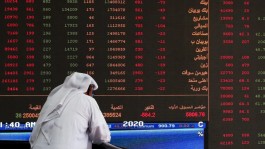Oil prices recorded a weekly rise, although Friday trading ended with a slight decline following a volatile session during which prices fell by more than a dollar per barrel as traders tried to absorb mixed signals regarding the volume of demand for oil next year.
Price movements
During the past week, oil prices recorded an increase, as Brent crude prices rose by 0.94 percent, reaching $76.55 per barrel, and US West Texas Intermediate crude rose by 0.28 percent, reaching $71.43 per barrel.
Upon settlement in Friday trading, Brent crude futures fell six cents, or 0.08 percent, while West Texas Intermediate crude fell 15 cents, or 0.21 percent.
The market stumbled earlier in the session after a survey of manufacturing activity issued by the Federal Reserve Bank of New York showed a decline in new orders for the third month, which may be an indication of weak demand for oil next year.
Traders were also affected by comments from New York Federal Reserve Bank President John Williams on Friday about hopes for lowering interest rates next year.
US Federal Reserve Chairman Jerome Powell said on Thursday that the cycle of raising interest rates with the aim of curbing inflation has likely ended, but he left the door open to the possibility of raising them again.
The dollar fell to its lowest level in four months yesterday, Thursday, after Powell's comments in which he expected to reduce borrowing costs in 2024. The dollar index remained largely stable today, Friday.
The decline in the dollar makes the oil in which it is denominated cheaper for buyers abroad.
The International Energy Agency said in a monthly report that global oil consumption will rise by 1.1 million barrels per day in 2024, an increase of 130,000 barrels per day from its previous expectations, and attributed this to improved demand expectations in the United States and lower oil prices.
These estimates for 2024 are less than half of the Organization of the Petroleum Exporting Countries' (OPEC) forecast for demand growth of 2.25 million barrels per day.




































